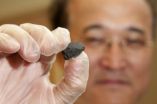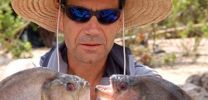(Press-News.org) CHESTNUT HILL, MA (Dec. 20, 2012) – The clock is ticking and you still haven't decided what to get that special someone in your life for the holidays. When it comes to those last-minute gift-buying decisions for family and close friends, intuition may be the best way to think your way through to that perfect gift.
When faced with tough decisions, some people like to "trust their gut" and go with their intuition. Others prefer to take an analytical approach.
Boston College Professor Michael G. Pratt, an expert in organizational psychology, says new research shows intuition can help people make fast and effective decisions, particularly in areas where they have expertise in the subject at hand.
When it comes to holiday shopping, it might help to draw on the expertise you've accumulated about your family, and friends.
"We often ask ourselves, 'What does that special someone want for Christmas?' Maybe the better question to ask is 'What do I know about this person?" said Pratt, a professor in the Carroll School of Management. "The chances are you know a lot. You know a lot about your parents and your children, and your close friends. What we've found is that kind of deep expertise helps to support decisions we make when we trust our gut."
In recent experiments, Pratt and his fellow researchers examined how well-served we are when we make decisions intuitively or through a more analytical approach, said Pratt, who recently co-authored a new report about intuitive decision-making in the Journal of Organizational Behavior and Human Decision Processes.
The researchers said the knock on intuition stems from earlier studies that examined intuition in the context of very structured, multi-step decisions in areas such as math or logic. Analytic decisions are great for breaking things down into smaller parts, which is necessary for a math problem. But intuition is about looking at patterns and wholes, which is needed when making quick decisions about whether something is real or fake, ugly or pretty, right or wrong.
"Similarly, for gift buying, there is not 'one right answer' as with a math problem," says Pratt, "It is a judgment call."
Pratt, along with researchers Erik Dane, of Rice University and Kevin W. Rockmann, of George Mason University conducted two experiments to test both methods as a means of making a basic decision, or one that doesn't break down into a subset of smaller tasks. In each experiment, one set of respondents was asked to think intuitively in a short amount of time. A second set was asked to take more time and use an analytical approach.
For example, in one experiment, men and women were asked to decide whether a designer handbag was "real" or "fake". Among subjects who had owned several brand-name satchels, intuitive respondents were able to make quick and effective judgments about the items.
"If you're looking at those shiny new winter shovels for your spouse, ask yourself, 'Is this right or wrong?' and trust your gut. You'll be well served by your intuition," said Pratt. "It's likely that your spouse doesn't want a shovel and you don't want to be the one who gives that gift."
###
The study, "When Should I Trust My Gut? Linking Domain Expertise to Intuitive Decision-making Effectiveness," is available online at www.sciencedirect.com/science/article/pii/S0749597812000994.
Gift misgivings? Trust your gut
Can intuition resolve Christmas gift dilemmas? New research suggests it can help
2012-12-21
ELSE PRESS RELEASES FROM THIS DATE:
Meteorite triggered scientific gold rush
2012-12-21
A meteorite that exploded as a fireball over California's Sierra foothills this past spring was among the fastest, rarest meteorites known to have hit the Earth, and it traveled a highly eccentric orbital route to get here.
An international team of scientists presents these and other findings in a study published Friday, Dec. 21, in the journal Science. The 70-member team included nine researchers from UC Davis, along with scientists from the SETI Institute, NASA and other institutions.
The researchers found that the meteorite that fell over Northern California on April ...
Engineers seek ways to convert methane into useful chemicals
2012-12-21
Little more than a decade ago, the United States imported much of its natural gas. Today, the nation is tapping into its own natural gas reserves and producing enough to support most of its current needs for heating and power generation, and is beginning to export natural gas to other countries.
The trend is expected to continue, as new methods are developed to extract natural gas from vast unrecovered reserves embedded in shale. Natural gas can be used to generate electricity, and it burns cleaner than coal.
"With petroleum reserves in decline, natural gas production ...
Clays on Mars: More plentiful than expected
2012-12-21
A new study co-authored by the Georgia Institute of Technology indicates that clay minerals, rocks that usually form when water is present for long periods of time, cover a larger portion of Mars than previously thought. In fact, Assistant Professor James Wray and the research team say clays were in some of the rocks studied by Opportunity when it landed at Eagle crater in 2004. The rover only detected acidic sulfates and has since driven about 22 miles to Endeavour Crater, an area of the planet Wray pinpointed for clays in 2009.
The study is published online in the ...
Lifestyle changes linked to better outcomes after peripheral intervention
2012-12-21
ANN ARBOR, Mich. – Patients who quit smoking and took an aspirin and statin before undergoing treatment for blocked leg arteries were less likely to suffer a complication six months later, according to new research led by the University of Michigan Cardiovascular Center.
But few patients made the lifestyle changes and were on recommended medical therapy that can relieve leg pain and cramping associated with peripheral arterial disease, or PAD.
The registry findings were published online ahead of print in Circulation: Cardiovascular Interventions and reveal a dramatic ...
Study shows heart calcium scan predictive of diabetes-related death from cardiovascular disease
2012-12-21
WINSTON-SALEM, N.C. – Dec. 20, 2012 – People with Type 2 diabetes have two to four times the risk of cardiovascular disease compared to people without the disease. The best way for doctors to predict which diabetes patients are at the greatest risk for heart disease is to use a coronary artery calcium (CAC) test in addition to the most commonly used assessment tool, according to researchers at Wake Forest Baptist Medical Center.
Current medical guidelines recommend treating all diabetes patients as high risk, but the Wake Forest Baptist study found that CAC can identify ...
Scripps Florida scientists create new approach to destroy disease-associated RNAs in cells
2012-12-21
JUPITER, FL, December 20, 2012 – Scientists from the Florida campus of The Scripps Research Institute (TSRI) have developed a new approach to alter the function of RNA in living cells by designing molecules that recognize and disable RNA targets. As a proof of principle, in the new study the team designed a molecule that disabled the RNA causing myotonic dystrophy.
The study, published online ahead of print on December 20, 2012 by the journal Angewandte Chemie, reports the creation of small molecules that recognize disease-associated RNAs, targeting them for destruction. ...
WCS applauds Dept. of Interior plan balancing conservation and energy development in NPR-A
2012-12-21
The Wildlife Conservation Society (WCS) lauded U.S. Secretary of the Interior Ken Salazars announcement of a final management plan for the National Petroleum Reserve-Alaska (NPR-A) that balances wildlife conservation and energy development in the biggest public landscape in the country. The Integrated Activity Plan and Final Environmental Impact Statement (Final IAP/EIS) issued today by the Bureau of Land Management is the first comprehensive land management plan ever developed for the NPR-A.
By protecting extensive coastal plain habitat around Teshekpuk Lake, and the ...
Black piranha, megapiranha have most powerful bites of fish living or extinct, finds GW researcher
2012-12-21
WASHINGTON— The black piranha and the extinct giant piranha, or megapiranha, have the most powerful bites of carnivorous fishes, living or extinct, once body size is taken into account, finds researchers in a paper recently published in Scientific Reports. The research paper, Mega-Bites: Extreme jaw forces of living and extinct piranhas, highlights the piranhas' specialized jaw morphology, which allows them to attack and bite chunks out of much larger prey.
Guillermo Ortí, the George Washington University Louis Weintraub Professor of Biology in the Columbian College of ...
Transplanted genetically-modified adipose cells offer potential therapy for liver diseases
2012-12-21
Putnam Valley, NY. (Dec. 20, 2012) – Using mesenchymal stromal cells derived from adipose (fat) tissues, genetically modified to express a bioluminescent marker, researchers in Italy have tracked cells after transplantation. The cells were followed from their injection into the spleen of mice modeling liver disease, to their characterization as "hepatic precursors," and to their subsequent migration through the spleen before engrafting at regenerating sites in the liver by bioluminescent imaging.
Their study is described in a recent issue of Cell Transplantation (21:9), ...
Cell Transplantation study investigates fate and function of cells transplanted to the CNS
2012-12-21
Putnam Valley, NY. (Dec. 20, 2012) – When different types of cells are transplanted with the intent of having them aid in repairing central nervous system (CNS) trauma, what is the fate and function of those cells? A Belgian research team carried out research aimed at answering this question by determining how five varieties of cells - neural stem cells, mouse embryonic fibroblasts, dendritic cells, bone marrow mononuclear cells (BMMNCs) and splenocytes - functioned and survived after transplantation in the CNS.
Their study is published in a recent issue of Cell Transplantation ...
LAST 30 PRESS RELEASES:
Norbert Holtkamp appointed director of Fermi National Accelerator Laboratory
New agentic AI platform accelerates advanced optics design
Biologists discover neurons use physical signals — not electricity — to stabilize communication
Researchers discover that a hormone can access the brain by hitchhiking
University of Oklahoma researcher awarded funding to pursue AI-powered material design
Exploring how the visual system recovers following injury
Support for parents with infants at pediatric check-ups leads to better reading and math skills in elementary school
Kids’ behavioral health is a growing share of family health costs
Day & night: Cancer disrupts the brain’s natural rhythm
COVID-19 vaccination significantly reduces risk to pregnant women and baby
The role of vaccination in maternal and perinatal outcomes associated with COVID-19 in pregnancy
Mayo Clinic smartwatch system helps parents shorten and defuse children's severe tantrums early
Behavioral health spending spikes to 40% of all children’s health expenditures, nearly doubling in a decade
Digital cognitive behavioral treatment for generalized anxiety disorder
Expenditures for pediatric behavioral health care over time and estimated family financial burden
Air conditioning in nursing homes and mortality during extreme heat
The Alps to lose a record number of glaciers in the next decade
What makes a good proton conductor?
New science reporting guide published for journalists in Bulgaria
New international study reveals major survival gaps among children with cancer
New science reporting guide published for journalists in Turkey
Scientists develop a smarter mRNA therapy that knows which cells to target
Neuroanatomy-informed brain–machine hybrid intelligence for robust acoustic target detection
Eight SwRI hydrogen projects funded by ENERGYWERX
The Lundquist Institute and its start-up company Vitalex Biosciences Announces Strategic Advancement of Second-Generation fungal Vaccine VXV-01 through Phase 1 Trials under $40 Million Competitive Con
Fine particles in pollution are associated with early signs of autoimmune disease
Review article | Towards a Global Ground-Based Earth Observatory (GGBEO): Leveraging existing systems and networks
Penn and UMich create world’s smallest programmable, autonomous robots
Cleveland researchers launch first major study to address ‘hidden performance killer’ in athletes
To connect across politics, try saying what you oppose
[Press-News.org] Gift misgivings? Trust your gutCan intuition resolve Christmas gift dilemmas? New research suggests it can help



